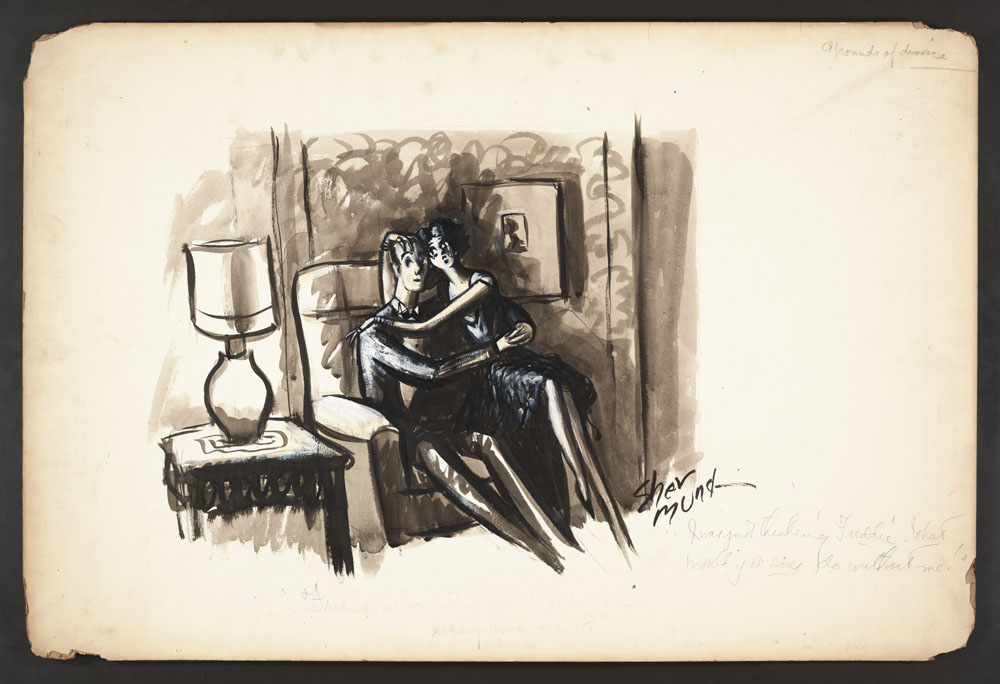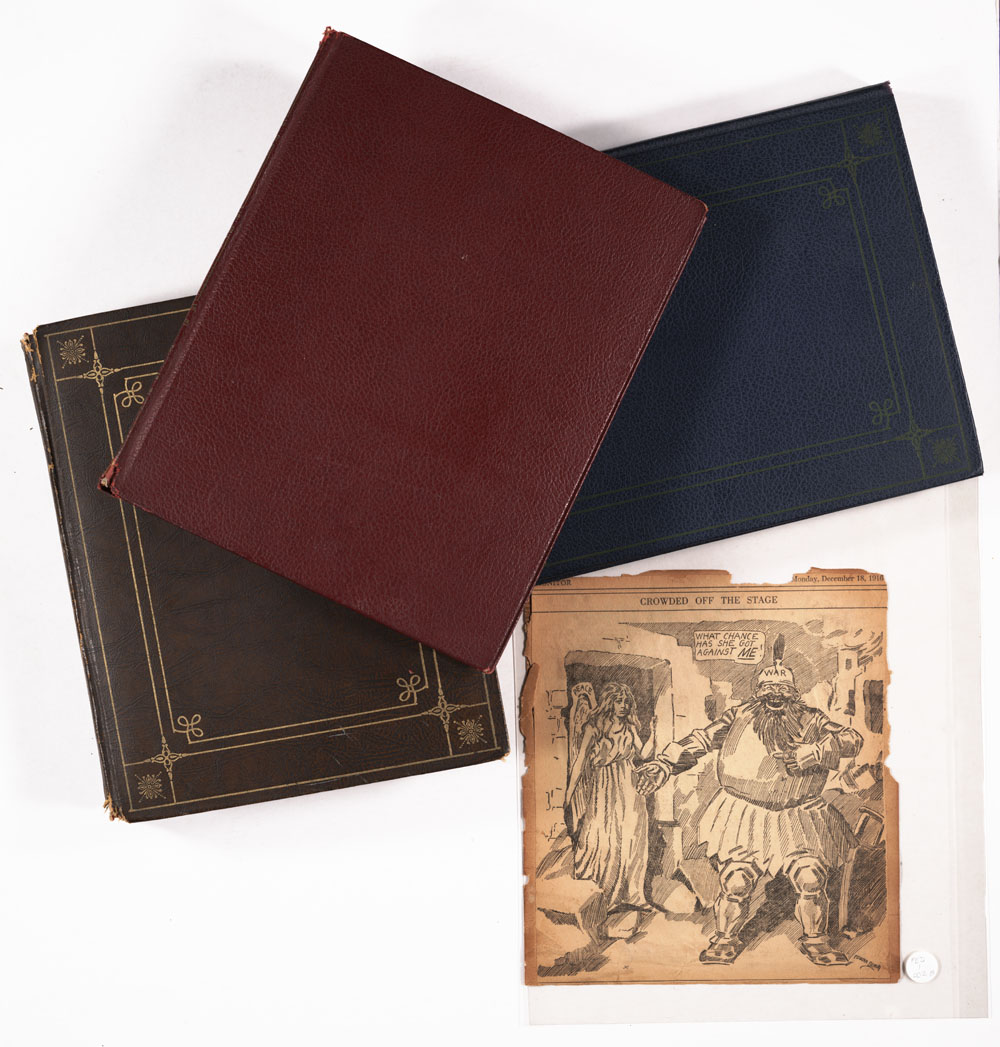My name is Caitlin McGurk, and I love Barbara Shermund.

"I was just thinking Freddie, what would you ever do without me?" Barbara Shermund original. Part of the International Museum of Cartoon Art Collection, The Ohio State University Billy Ireland Cartoon Library & Museum (click to enlarge)
One of the first female cartoonists at The New Yorker, Barbara was one of the most edgy, whimsical, and cutting cartoonists of the past century– yet you have probably never heard of her. It’s as entertaining and exhilirating to go through the Barbara Shermund collection here at The Billy Ireland Cartoon Library & Museum as it is frusrating- how have we forgotten such a brilliant pioneer of early feminist gag cartoons? A quick google search for Barbara will retrieve a few art auctions of her work, Hilda Terry’s Wikipedia page, some extremely brief single-paragraph biographies, and one lovely but short rememberance by cartoonist Michael Maslin.
Luckily, New Yorker cartoonist Liza Donnelly’s incredible book Funny Ladies: The New Yorker’s Greatest Women Cartoonists and Their Cartoons pays homage to Shermund again and again, and sheds some light on who she was. Letters between Shermund and cartoonist friend Eldon Dedini deconstruct the mystery, and just looking at her originals here at the Cartoon Library tell their own story.

"Evelyn, speak more respecftfully to your father!" "Oh mother, don't be so pre-war!" Barbara Shermund original. Part of the International Museum of Cartoon Art Collection, The Ohio State University Billy Ireland Cartoon Library & Museum(click to enlarge)
Born in San Francisco in 1899, the daughter of a sculptor and an architect, Shermund was encouraged in her talents and attended The California School of Fine Arts. At 26, she moved to New York City where she began working for The New Yorker within its first four months of existence–both writing and drawing cartoons herself in the beginning. Contributing 8 covers for the magazine and hundreds of cartoons, Shermund’s humor was esstential for the times, and she later went on to become a mainstay at Esquire.
Donnelly writes of her, “She drew mostly about the New Woman, demonstrating an understanding of the newfound independence while not being afraid to poke fun at her. Her women were alternately clueless and strong, depending on the cartoon. This was the state of women at the time–some were experimenting, coming out of the home, and speaking their mind. Meanwhile flappers among them showed disdain for an education and just wanted to have fun. What comes through in many of the cartoons is that Shermund’s women did not need men”
With a sense of humor that hits you quick but is hard to pin down throughout the entirety of her career (her work changed quite drastically once she stopped writing her own gags), this transcience seemed to pervade most aspects of her life. Although she arrived in NYC in 1925, Shermund did not have a set address until much later in her life. She was considered the most well-travelled New Yorker cartoonist of the time, constantly taking off for another city or country, or spending her time staying with friends between Manhattan and Woodstock, NY. Without ever having a formal studio space, she preferred drawing at the kitchen table.
As seen in some of the pieces I’ve included in this post, Shermund’s characters were alive and astute. They spoke their mind about sex and marriage, smoked cigarettes and made fun of everything at a time when it was not so proper or common to see young women doing so. She was among the first three women to be seriously considered and eventually accepted as a member of the boys club that was the National Cartoonist Society in 1950. In Hilda Terry’s witty letter to the NCS requesting their admittal (Terry, Shermund, and Edwina Dumm), she suggests that they change their name to the National Men’s Cartoonist Society. Assertive and ambitious while still maintaining a charmingly sly repose, these strong women truly paved the way for their successors- and seemed to have fun doing so.

"Well, I guess women are just human beings after all." Barbara Shermund original. Part of the International Museum of Cartoon Art Collection, The Ohio State University Billy Ireland Cartoon Library & Museum (click to enlarge)
There is still much to uncover about Shermund’s life, and I’d like to thank Liza Donnelly for writing such a glorious and well-researched book that includes a bit of her history. We at the Cartoon Library would love to someday have an exhibit of Shermund’s work, and if any readers have more information on her we would love for you to share it!
To see a few more of my favorites from her collection of hundreds of originals, you can search for Barbara Shermund by name in our Cartoon Image Database.
-Caitlin McGurk








Recent Comments